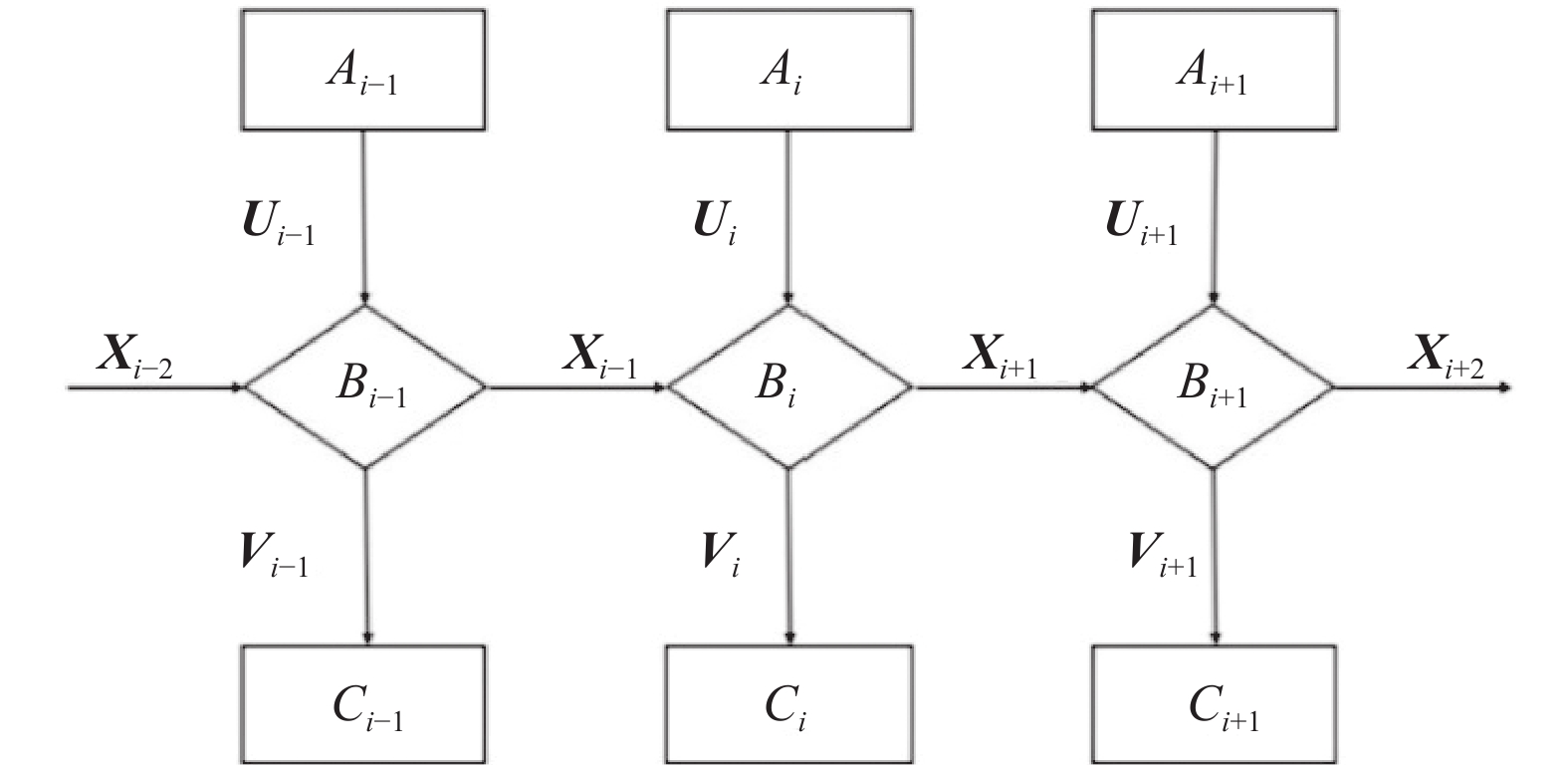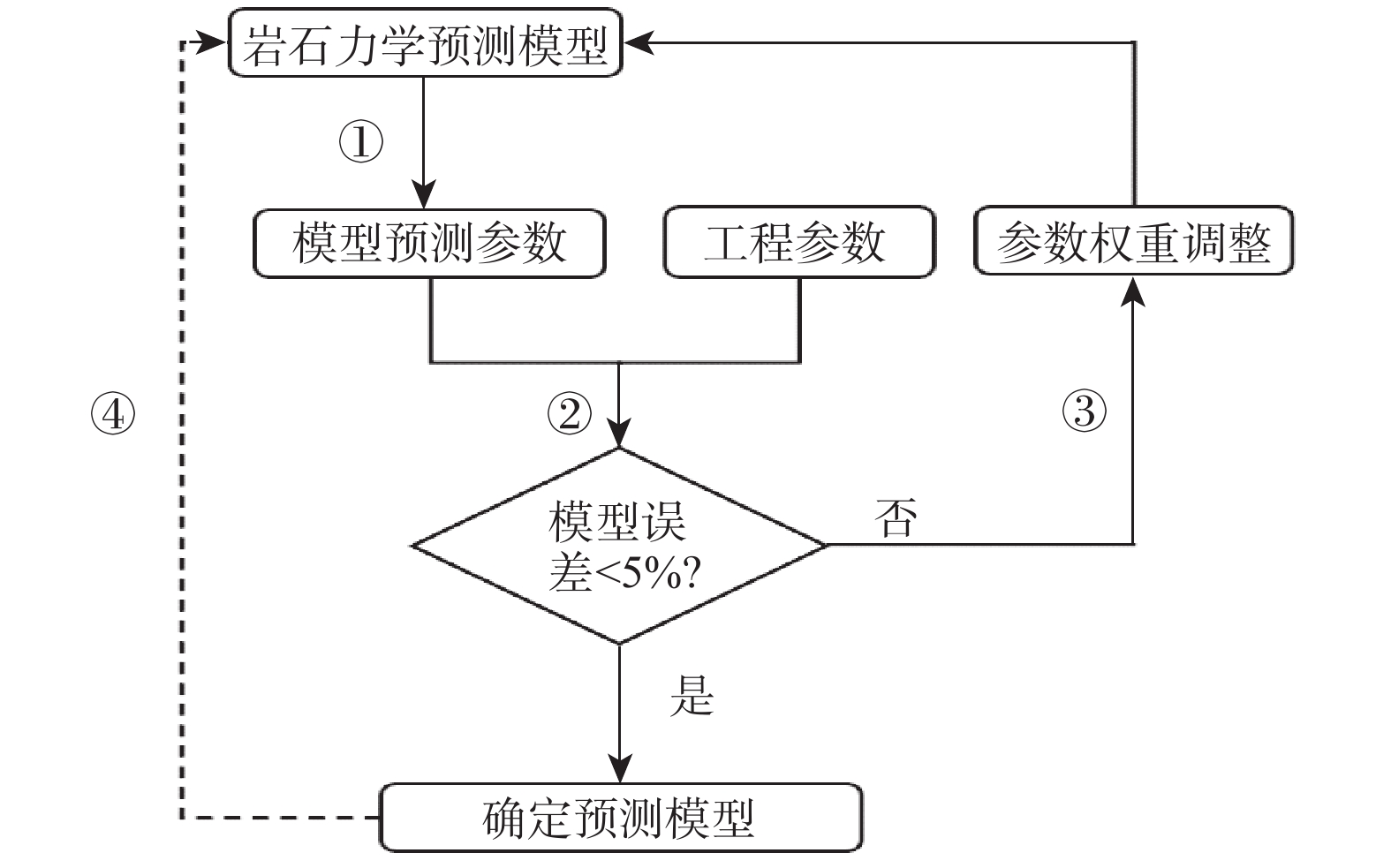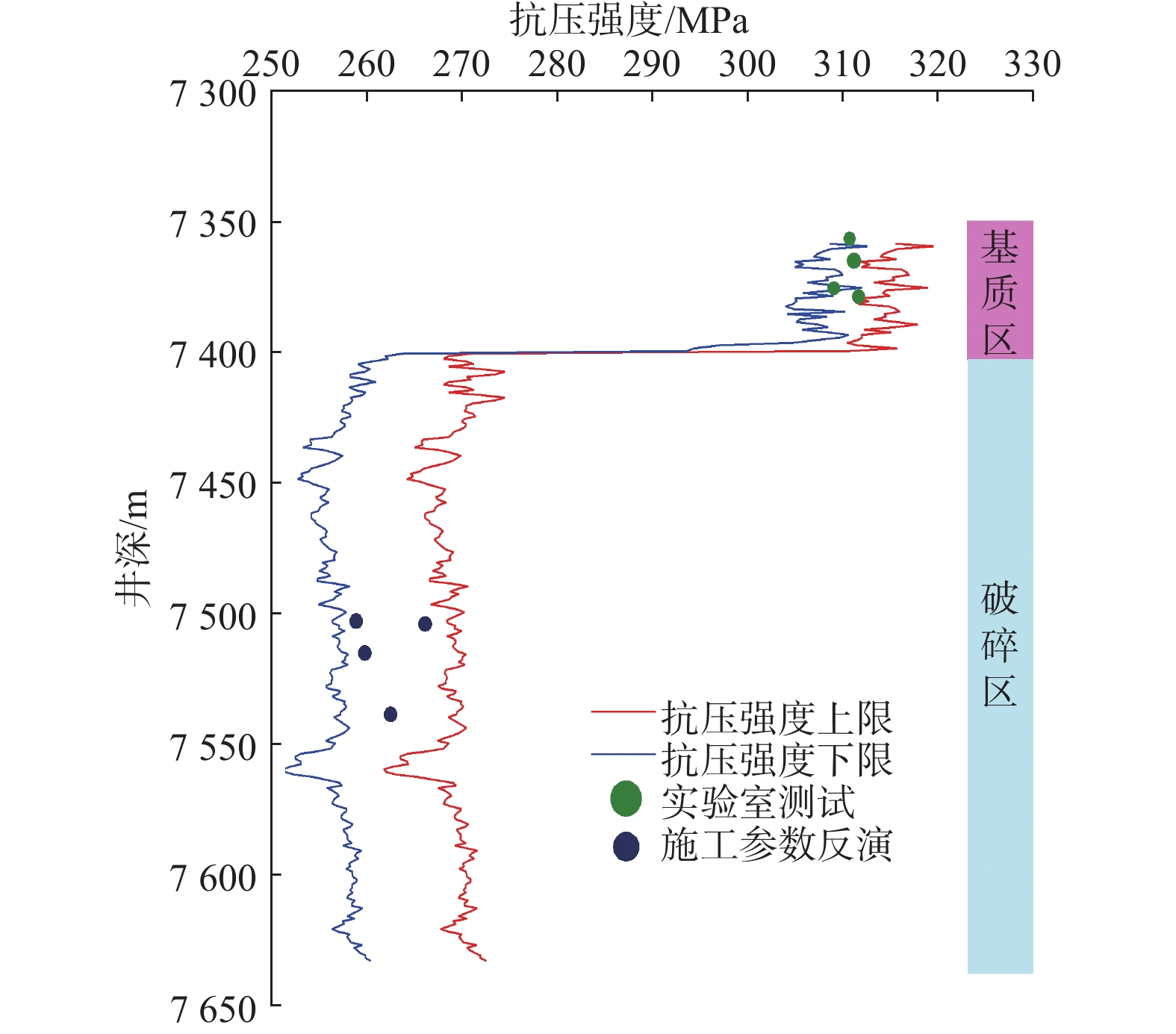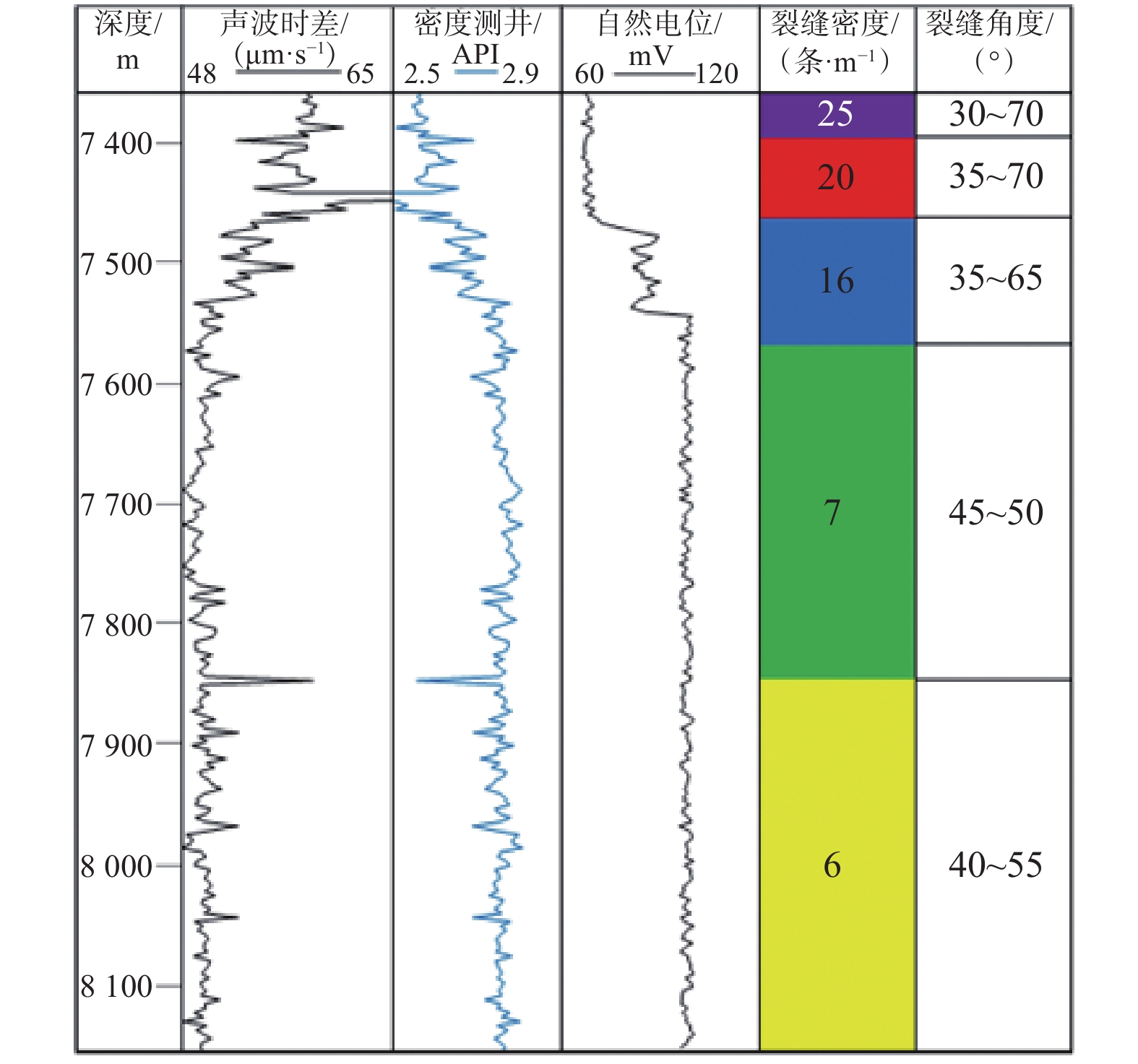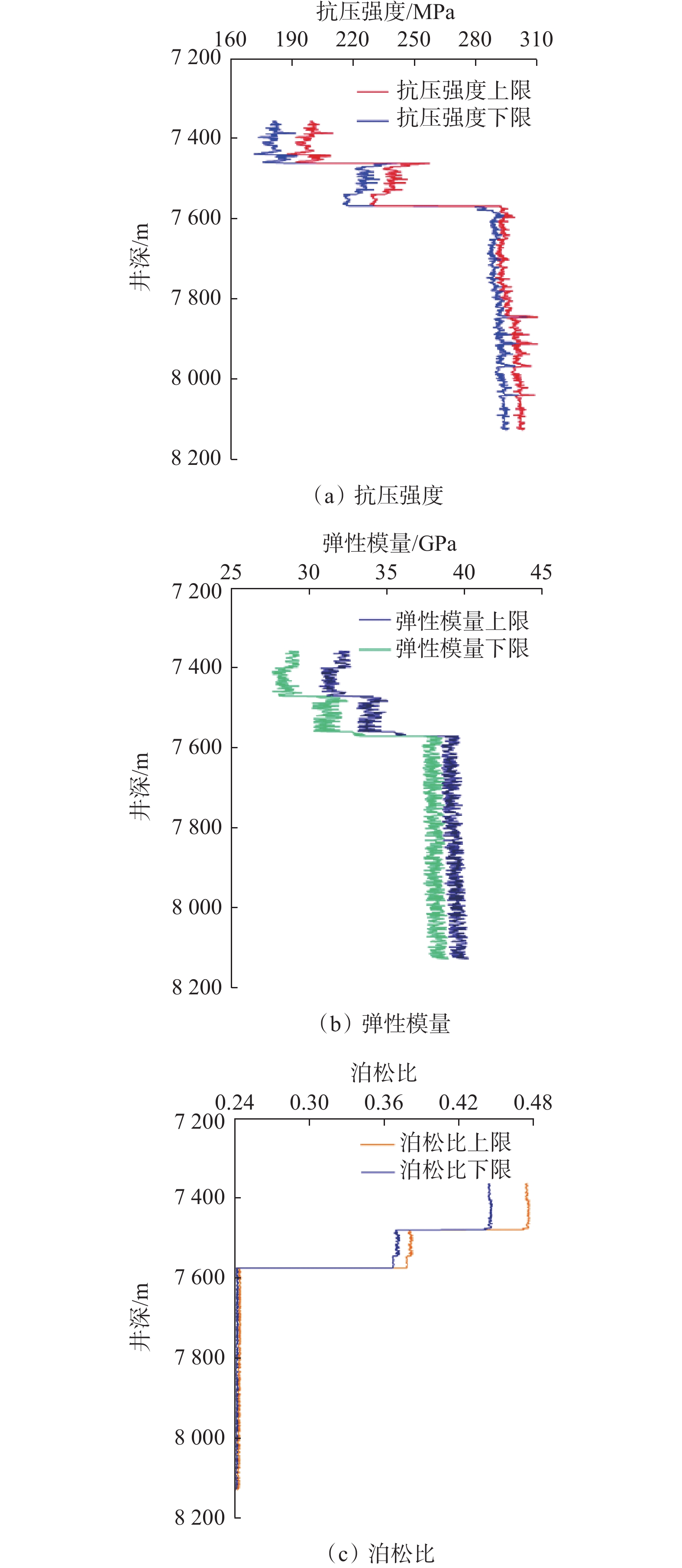Prediction Model of Rock Mechanics Parameters in Ultra-DeepFractured Formations Based on Big Data
-
摘要:
超深储层油气资源丰富,是目前油气开发的重点,但是储层岩体破碎和非均质性强,传统的预测储层力学参数方法误差大,对工程设计和施工造成很大的困难。基于大量试验和现场施工数据,分析了储层测井数据、储层裂缝数据、岩石力学数据的相互联系,建立了基于岩石力学性质−地质储层特征−测井解释之间物理关联的多参数约束;开发了多元非线性回归拟合算法模型,形成了超深破碎型储层全储层段岩石力学参数预测模型。该预测模型克服了破碎型地层数据量少导致的计算误差大的难题,能明确全储层段岩石力学参数,与实际工程施工参数相比预测准确度达90%以上。研究结果为超深破碎型地层钻完井安全施工提供了技术支撑。
Abstract:The rich oil and gas resources in ultra-deep reservoirs are the focus of oil and gas development at present. However, due to the high fragmentation and strong heterogeneity of rock mass in reservoirs, the traditional method of predicting reservoir mechanics parameters has a large error, which causes great difficulties in engineering design and operation. Based on a large number of experimental and field operation data, the interrelationship among reservoir logging data, reservoir fracture data, and rock mechanics data was analyzed. A multi-parameter constraint was established based on the physical correlation between rock mechanical properties, geological reservoir characteristics and logging interpretation, and a multivariate nonlinear regression fitting model was developed to predict rock mechanics parameters in the whole reservoir section of ultra-deep fractured reservoirs. The prediction model overcame the problem of large calculation errors caused by small amount of fractured formation data and could determine the rock mechanics parameters in the whole reservoir section. Compared with the actual operation parameters, the prediction accuracy is more than 90%. The research results provide technical support for the safe operation of drilling and completion in ultra-deep fractured formations.
-
-
表 1 模型评估结果
Table 1 Model evaluation results
参数 均方差 平均绝对误差 决定系数 抗压强度 2.22 0.88 0.94 弹性模量 1.29 1.21 0.96 泊松比 2.50 2.42 0.89 -
[1] 赵志国,白彬珍,何世明,等. 顺北油田超深井优快钻井技术[J]. 石油钻探技术,2017,45(6):8–13. ZHAO Zhiguo, BAI Binzhen, HE Shiming, et al. Optimization of fast drilling technology for ultra-deep wells in the Shunbei Oilfield[J]. Petroleum Drilling Techniques, 2017, 45(6): 8–13.
[2] 何成江,姜应兵,文欢,等. 塔河油田缝洞型油藏 “一井多控” 高效开发关键技术[J]. 石油钻探技术,2022,50(4):37–44. HE Chengjiang, JIANG Yingbing, WEN Huan, et al. Key technologies for high-efficiency one-well multi-control development of fractured-vuggy reservoirs in Tahe Oilfield[J]. Petroleum Drilling Techniques, 2022, 50(4): 37–44.
[3] 何立成,唐波. 准噶尔盆地超深井钻井技术现状与发展建议[J]. 石油钻探技术,2022,50(5):1–8. HE Licheng, TANG Bo. The up to date technologies of ultra-deep well drilling in Junggar Basin and suggestions for further improvements[J]. Petroleum Drilling Techniques, 2022, 50(5): 1–8.
[4] 陈勉. 我国深层岩石力学研究及在石油工程中的应用[J]. 岩石力学与工程学报,2004,23(14):2455–2462. CHEN Mian. Review of study on rock mechanics at great depth and its applications to petroleum engineering of China[J]. Chinese Journal of Rock Mechanics and Engineering, 2004, 26(14): 2455–2462.
[5] KHOSRAVI M, TABASI S, HOSSAM ELDIEN H, et al. Evaluation and prediction of the rock static and dynamic parameters[J]. Journal of Applied Geophysics, 2022, 199: 104581. doi: 10.1016/j.jappgeo.2022.104581
[6] AMEEN M S, SMART B G D, SOMERVILLE J M, et al. Predicting rock mechanical properties of carbonates from wireline logs (A case study: Arab-D reservoir, Ghawar field, Saudi Arabia)[J]. Marine and Petroleum Geology, 2009, 26(4): 430–444. doi: 10.1016/j.marpetgeo.2009.01.017
[7] 李智武,罗玉宏,刘树根,等. 川东北地区地层条件下致密储层力学性质实验分析[J]. 矿物岩石,2005,25(4):52–60. LI Zhiwu, LUO Yuhong, LIU Shugen, et al. The experimental analysis of mechanical properties of compact reservoir rocks under formation conditions, northeast of Sichuan Basin, China[J]. Mineralogy and Petrology, 2005, 25(4): 52–60.
[8] 楼一珊,庄锦江,黄荣樽. 岩石动、静弹性参数相关性的研究及其应用[J]. 江汉石油学院学报,1989,11(2):62–69. LOU Yishan, ZHUANG Jinjiang, HUANG Rongzun. Study on the interrelation of dynamic and static elastic parameters of rocks and its application[J]. Journal of Jianghan Petroleum Institute, 1989, 11(2): 62–69.
[9] 杨秀娟,张敏,闫相祯. 基于声波测井信息的岩石弹性力学参数研究[J]. 石油地质与工程,2008,22(4):39–42. YANG Xiujuan, ZHANG Min, YAN Xiangzhen. Study on acoustic logging-based rock elasticity parameters[J]. Petroleum Geology and Engineering, 2008, 22(4): 39–42.
[10] 韩玉娇. 基于AdaBoost机器学习算法的大牛地气田储层流体智能识别[J]. 石油钻探技术,2022,50(1):112–118. HAN Yujiao. Intelligent fluid identification based on the AdaBoost machine learning algorithm for reservoirs in Daniudi Gas Field[J]. Petroleum Drilling Techniques, 2022, 50(1): 112–118.
[11] 房好青,赵兵,汪文智,等. 塔河油田靶向压裂预制缝转向技术模拟研究[J]. 石油钻探技术,2019,47(5):97–103. FANG Haoqing, ZHAO Bing, WANG Wenzhi, et al. Simulation study on the range of diversion in targeted fracturing of prefabricated fractures in the Tahe Oilfield[J]. Petroleum Drilling Techniques, 2022, 50(4): 97–103.
[12] SINGH R, KAINTHOLA A, SINGH T N. Estimation of elastic constant of rocks using an ANFIS approach[J]. Applied Soft Computing, 2012, 12(1): 40–45. doi: 10.1016/j.asoc.2011.09.010
[13] YAGIZ S, GOKCEOGLU C. Application of fuzzy inference system and nonlinear regression models for predicting rock brittleness[J]. Expert Systems with Applications, 2010, 37(3): 2265–2272. doi: 10.1016/j.eswa.2009.07.046
[14] GUHA ROY D, SINGH T N. Predicting deformational properties of Indian coal: soft computing and regression analysis approach[J]. Measurement, 2020, 149: 106975. doi: 10.1016/j.measurement.2019.106975
[15] TORABI-KAVEH M, NASERI F, SANEIE S, et al. Application of artificial neural networks and multivariate statistics to predict UCS and E using physical properties of Asmari limestones[J]. Arabian Journal of Geosciences, 2015, 8(5): 2889–2897. doi: 10.1007/s12517-014-1331-0
[16] DEHGHAN S, SATTARI G, CHEHREH CHELGANI S, et al. Prediction of uniaxial compressive strength and modulus of elasticity for Travertine samples using regression and artificial neural networks[J]. Mining Science and Technology (China), 2010, 20(1): 41–46. doi: 10.1016/S1674-5264(09)60158-7
[17] MANOUCHEHRIAN A, SHARIFZADEH M, MOGHADAM R H. Application of artificial neural networks and multivariate statistics to estimate UCS using textural characteristics[J]. International Journal of Mining Science and Technology, 2012, 22(2): 229–236. doi: 10.1016/j.ijmst.2011.08.013
[18] RABBANI E, SHARIF F, KOOLIVAND SALOOKI M, et al. Application of neural network technique for prediction of uniaxial compressive strength using reservoir formation properties[J]. International Journal of Rock Mechanics and Mining Sciences, 2012, 56: 100–111. doi: 10.1016/j.ijrmms.2012.07.033
[19] KAUNDA R B, ASBURY B. Prediction of rock brittleness using nondestructive methods for hard rock tunneling[J]. Journal of Rock Mechanics and Geotechnical Engineering, 2016, 8(4): 533–540. doi: 10.1016/j.jrmge.2016.03.002
[20] REZAEI M, MAJDI A, MONJEZI M. An intelligent approach to predict unconfined compressive strength of rock surrounding access tunnels in longwall coal mining[J]. Neural Computing and Applications, 2014, 24(1): 233–241. doi: 10.1007/s00521-012-1221-x
[21] MOHAMAD E T, ARMAGHANI D J, MOMENI E, et al. Rock strength estimation: a PSO-based BP approach[J]. Neural Computing and Applications, 2018, 30(5): 1635–1646. doi: 10.1007/s00521-016-2728-3
[22] FRIEDMAN J H. Multivariate adaptive regression splines[J]. The Annals of Statistics, 1991, 19(1): 1–67.
[23] 马建海,孙建孟. 用测井资料计算地层应力[J]. 测井技术,2002,26(4):347–352. MA Jianhai, SUN Jianmeng. Calculate formation stress using logging data[J]. Well Logging Technology, 2092, 26(4): 347–352.
-
期刊类型引用(6)
1. 朱亮,李晓明,纪慧,楼一珊. 基于SAE和LSTM神经网络的深部未钻地层可钻性预测方法. 西安石油大学学报(自然科学版). 2025(01): 39-46+64 .  百度学术
百度学术
2. 叶长文,张琴,董钟骏,陈雪松,李超,梅峻铭,黄梅,彭德军,宋益. 用名义复杂概念和大数据研究区域钻井. 钻采工艺. 2023(06): 184-189 .  百度学术
百度学术
3. 吴丰,谢煜华,王雲,尹晓明,殷召海,童鑫. 厚层状砂砾岩油藏优快钻井关键技术. 石油钻采工艺. 2022(01): 26-30 .  百度学术
百度学术
4. 苏崭,王博,盖京明,李玮,赵欢,陈冰邓. 复合式扭力冲击器在坚硬地层中的应用. 中国煤炭地质. 2021(05): 47-50+57 .  百度学术
百度学术
5. 苏建,袁则名,和鹏飞,宋瑞,吴义标. HPG复合冲击钻井提速工具在渤海油田的应用. 海洋工程装备与技术. 2019(01): 457-464 .  百度学术
百度学术
6. 张进双,张增宝,王学才. 刀翼式孕镶金刚石钻头设计及在哈山101井的应用. 石油钻探技术. 2019(05): 57-61 .  本站查看
本站查看
其他类型引用(2)



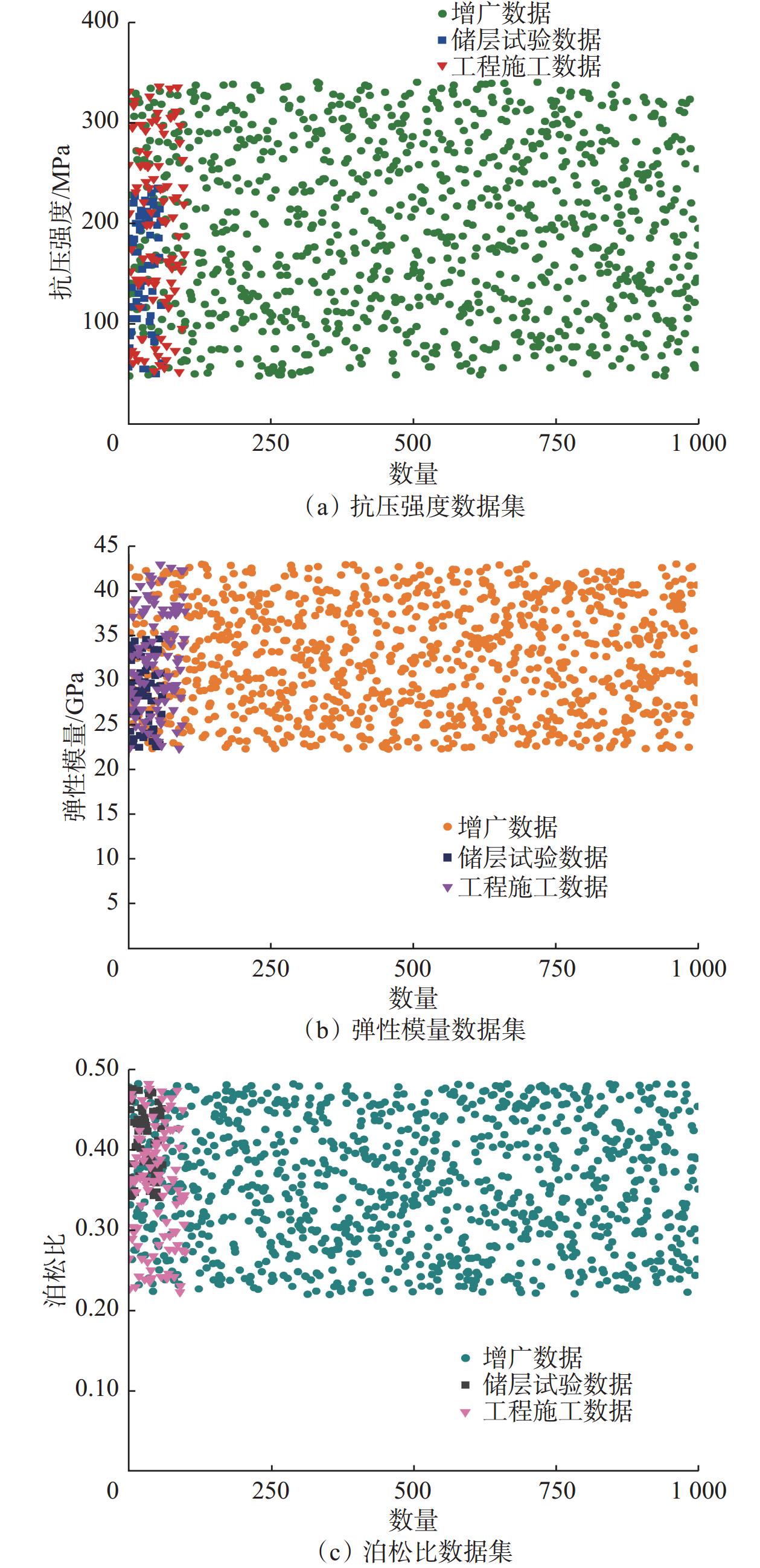
 下载:
下载:
